The ability to make good decisions is the #1 common denominator of great leaders and teams. And with the world moving faster than ever before, leaders are continually forced to make decisions at a pace and risk level they have never experienced.
In Part 4 of this series, we show you how to master the process of solving issues at the root cause, so you will be able to accelerate decision making as you navigate through today’s unchartered waters and prepare for recovery during the post-COVID-19 world.
Albert Einstein knew something about decision making when he said, “How well you define a problem determines how well you solve it.” He believed that the quality of the solution you generate is in direct proportion to your ability to identify the root cause of the problem you hope to solve.
Enter IDS! Identify, Discuss, Solve. IDS is an EOS tool to help identify the root cause of an issue, with all members of a team contributing their ideas, in order to discover the best solution.
The Issues Solving Track (IDS) is used during weekly Level 10 Meetings, during Quarterly and Annual planning meetings and really anytime there are issues that need to be solved. For team meetings, it’s essential for the facilitator to select a note keeper to prepare and update the agenda and populate the Issues List. Your ability to facilitate effectively will be greatly compromised if you’re trying to take notes at the same time. Here’s how the Issues Solving Track works in 5 simple steps:
1. BUILD AN ISSUES LIST
The first step is to build a robust issues list filled with problems, obstacles, opportunities and improvements that, when IDS’d, will reduce redundancies, inefficiencies and stress, accelerating your organization’s success. Encourage your team to be open and honest, bring issues to the meeting, and be actively engaged in a discussion, with the greatest good of the organization in mind.
2. SELECT 1, 2, 3
Once the Issues List is populated either on a white board, tear sheet or digitally (if your meeting is online), select issues 1, 2, 3. Encourage the team to select the most important issues first – the ones that give the organization the most relief or upside if resolved. By prioritizing the biggest issues, rather than solving the easy ones, a few issues will fall off the list because they are symptoms of the real issue.
Here’s another tip. Rather than selecting by consensus, coach your team to “shout out over the bow” and claim their issue. If someone’s issue didn’t get selected in the top 3, then encourage them to speak up during the next round. By using this efficient selection process, you’ll have more time to solve issues!
3. IDENTIFY, DISCUSS, SOLVE
IDENTIFY
Have the person who contributed the issue state the problem. Like peeling the layers of an onion, spend time digging down to find the real issue.
DISCUSS
Once you’ve clearly identified the real issue, have everyone weigh in with their thoughts, concerns and ideas until the solution becomes clear. It’s typical for people to spend time discussing without solving anything, so keep the conversation focused on the real issue.
SOLVE
Agree on a plan to resolve the issue – hopefully forever! Sometimes the issue will have to go back up for discussion again, until you get more alignment.
4. ASSIGN ONE OR MORE TO-DO’S
Once a solution is selected, then an action step must be put on the To-Do List along with who’s accountable for getting it “to-done” by the next meeting. The To-Do List is a list of one-week action items with someone who’s accountable for each To-Do. A goal of 90% of To-Do’s must be to-done by the next meeting. If something is not done, then it may go back on the Issues List – or roll to the next week. Longer than that and the issue goes back on the Issues List.
5. LATHER, RINSE AND REPEAT
A typical Level 10 Meeting has 60 minutes for IDSing. Select another 1, 2, and 3, IDS, and assign To-Do’s until you run out of time. Lather, rinse, repeat!
ONE IMPORTANT TIP
Whoever is facilitating the meeting must be vigilant about keeping the team on track and avoiding tangents. If anyone veers off topic, discussing ad nauseam, call out “TANGET ALERT,” and get the team back to the issue at hand. Over time, the facilitator – and sometimes the entire team – will develop a finely tuned radar for anyone who goes off topic. A Tangent Alert is just a friendly triggering mechanism to keep everyone on track. As you become attuned to finding issues, the tangent might just be a real issue, so put it on the Issues List for the next round!
ONE COMMON PITFALL
Like a muscle, IDSing effectively takes work and practice. The tendency for us impatient humans is to jump to solutions too fast. If the issue is a mere symptom, then you most likely will end up solving the wrong issue – and the problem will rear up again as a recurring issue. If issues are reappearing on your Issues List, slow down, dig in and make sure you have identified the real issue.
As Gino says, “Our ability to achieve success is in direct proportion to our ability to solve our issues!” Being able to effectively IDS issues during challenging times, and during good times as well, will help leaders and teams make better and faster decision, removing obstacles and barriers more quickly, and taking advantage of new opportunities that could make the difference in surviving or thriving into the future. From now on, when faced with an issue, you simply “IDS” it!

